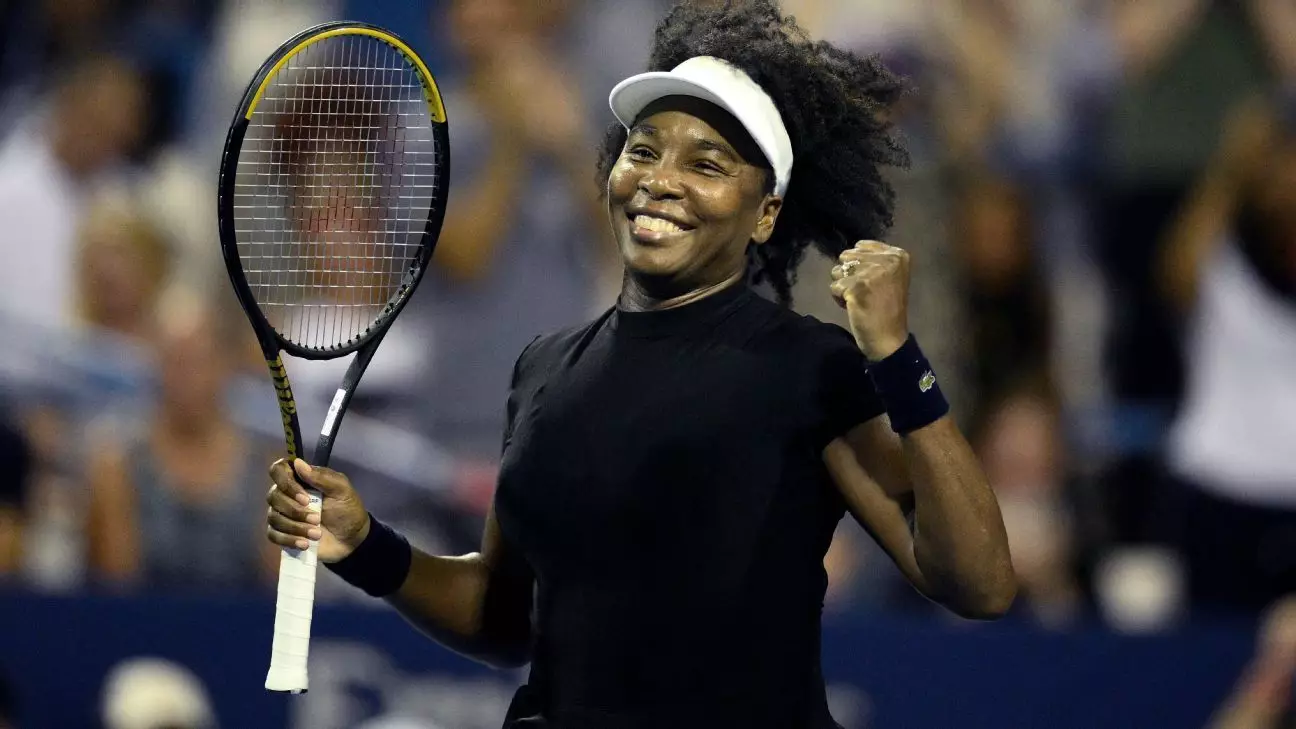Venus Williams’s recent victory at the DC Open was nothing short of a triumph against the relentless march of time and societal expectations. At 45 years old, she became the second-oldest woman to secure a singles win at the professional level—a feat that not only celebrates individual resilience but also questions the arbitrary boundaries society often places on aging athletes. Her performance, punctuated with her signature power and grace, shattered the misconception that athletic excellence is exclusively reserved for the young. In a culture obsessed with youth and rapid innovation, Williams’s victory serves as a quiet but powerful protest: aging can be an asset, not a hindrance, if approached with passion, discipline, and unwavering commitment.
The historic significance extends beyond the mere numbers. It marks a visceral rebuke to the ageist narrative that dismisses older athletes as passé or irrelevant. Williams’s ability to compete at this level, her endurance, and her unwavering spirit expose that age is more a state of mind than a biological limitation. Her return, after facing health setbacks and surgeries, underscores an essential truth: perseverance and resilience are sometimes more pertinent than years tracked on a calendar. Her victory challenges the prevailing cultural narrative that equates aging with decline, advocating instead for a broader, more inclusive understanding of vitality and capability.
Breaking Boundaries in a Youth-Oriented Sport
Tennis, like many sports, has long been perceived as a young person’s game—a domain dominated by fresh faces and quick reflexes. Williams’s triumph disrupts this misconception and inspires a redefinition of what it means to compete beyond the age of 40. Her performance was marked by familiar power—blistering serves that clocked at 110 mph and groundstrokes that once reigned over her contemporaries—reminding us that mastery and experience can sometimes trump youth. The crowd’s palpable excitement reflects society’s complex relationship with aging athletes: we cherish their stories, yet often dismiss their ongoing competitiveness.
Williams’s resilience highlights an important liberal value: the need to promote equality of opportunity regardless of age. Her journey underscores that institutional and societal barriers—such as perceptions of aging—must be dismantled to foster a truly inclusive sporting environment. It’s a call to redefine athletic longevity, emphasizing ability and dedication over superficial notions of relevance tied to youthful vigor. Her comeback story is a testament to the importance of support systems, both personal and societal, that empower individuals to continue striving regardless of chronological age.
The Power of Community and Support in a Competitive Arena
Integral to Williams’s victory was the enthusiastic support from the crowd—a reflection of her long-standing impact not just on tennis but on society’s broader cultural fabric. The sell-out arena, the chants, and her own palpable joy illuminated how community backing can bolster individual resilience. Her performance at the DC Open wasn’t merely a personal achievement; it was a powerful reminder that collective encouragement can propel individuals to challenge the status quo.
This victory also signals a broader societal shift towards valuing older adults’ contributions. Williams, with her history of advocacy and philanthropy, embodies a philosophy that champions aging as a stage for continued influence, growth, and achievement. Her success is a victory for aging populations everywhere, advocating for a society that respects and nurtures potential at every life stage rather than discarding it. The narrative she crafts isn’t just about tennis life but about humanizing the aging process—transforming perceptions from decline to opportunity.
Challenging the Narrative: Age and Power in Society
At a deeper level, Venus Williams’s victory questions structural and cultural biases that marginalize older individuals in competitive fields. Her resilience embodies a call for greater societal recognition of mature individuals’ capabilities—challenging the stereotype that greatness is fleeting after a certain age. In a broader sense, her story advocates for a more nuanced understanding of strength, one that appreciates experience and perseverance as vital components of ongoing achievement.
This moment underscores the urgent need for institutions—whether sports organizations, workplaces, or communities—to embrace age as an asset rather than a liability. Williams’s comeback could serve as an educational catalyst, inspiring policies that promote lifelong engagement and participation. By defying ageist stereotypes, she pushes society to reevaluate its fixations on youth and recognize that true vitality is multidimensional, rooted in resilience, passion, and sustained effort.
Her performance at the DC Open embodies the spirit of continual growth and defiance of societal limitations. It’s a testament to the belief that aging, when approached with purpose and resilience, can be a powerful platform of empowerment rather than decline. Williams’s story isn’t just about a tennis match; it’s a rallying cry for a more inclusive, respectful, and age-diverse society that values human potential at every stage of life.

Leave a Reply